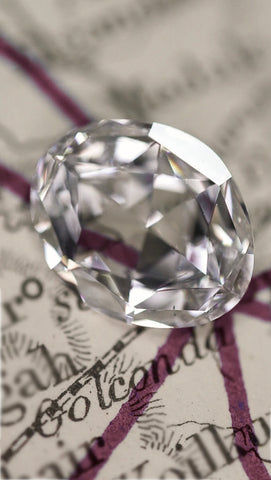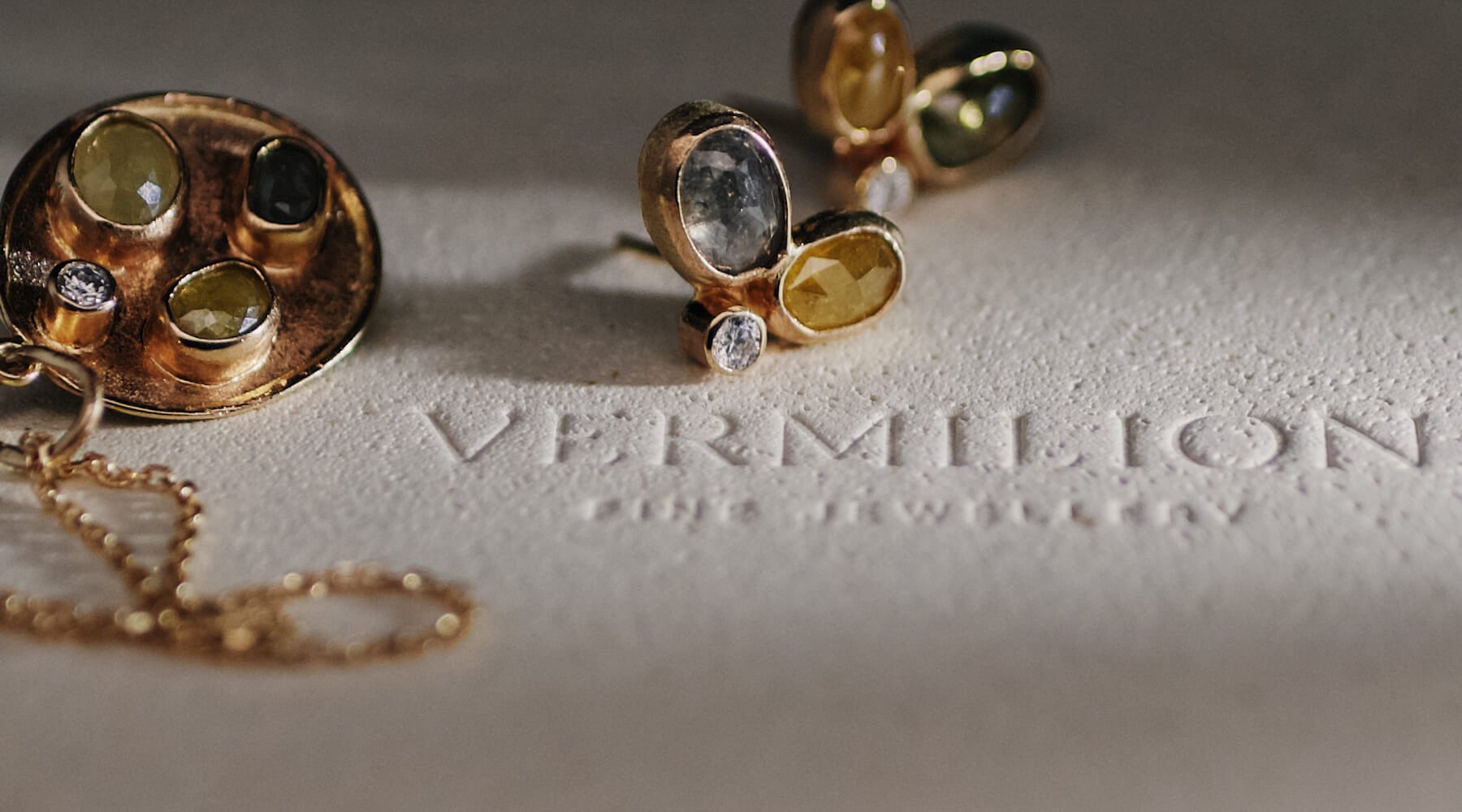
April, the month of rebirth or harvest, depending on which hemisphere you are in, is graced with the exquisite diamond as its birthstone. The hardest of stones, making it when cut, the most brilliant. Its journey of pressure and time to the surface over billions of years into the hands of cutters who shear them into facets showcasing the brilliance that we all know and love.
"Adopted from the Greek word adamas, meaning invincible"
As a result of a diamonds’ cold, sparkling fire, it’s held us spellbound for centuries. What’s more, it’s inspired rich, passionate myths of romance, intrigue, power, greed and magic.
Thanks to the 'Diamonds are forever" iconic marketing blitz in 1948 by De Beers, diamonds have become the symbol of enduring love, & remain the stone of choice for committment rings. Add to that, the supreme hardness of diamonds for everyday wear, their value & history makes them a stone to covet.
"Diamonds are between 1 billion and 3.5 billion years old"
Most were formed at depths between 150 and 250 kilometres in the Earth's mantle, although a few have come from as deep as 800 kilometres.
There are many kinds of diamonds: transparent, translucent, or opaque; ranging from colorless to sooty black, with many colors in between. Mostly transparent diamonds, those that are colorless or tinted, end up in jewellery. And then lower grade diamonds are for industrial use.
The color of a diamond depends on the kind of impurities embedded inside it. For example, yellow diamonds betray minute quantities of nitrogen, while boron imparts a bluish hue. As a matter of fact, some inclusions in diamonds have great scientific value. That’s because they are time capsules containing valuable information about conditions deep in the Earth’s upper mantle where diamonds form. Additionally, they offer clues to the formation and age of the diamond.
"The fairest diamonds of them all, Type lla Golconda Diamonds"

The Golconda region was a major trading centre in South East India and the source of the world's most-famous diamonds (this map shows the location of Golconda Sultanate in 1733). Until the end of the 19th century, it was the primary source of the finest and largest diamonds in the world, making the name "Golconda diamond" synonymous with high-quality diamond. They are formed of pure carbon and have no nitrogen or boron and are rated high on grading standards, giving them the rare Type lla designation (Type IIa count less than two percent of the world's natural diamonds). They are large and naturally occur in many colours but most of them are known for their colourless clarity and material properties. The most famous diamond from this region is the oval brilliant cut Koh-I-Noor (top left picture) now part of the British Crown Jewels. Although its mines of Golconda are now inactive and depleted, no other region in the world has matched the quality of diamonds mined from this region.
"Ancient Hindus, finding diamonds washed out of the ground after thunderstorms, believed bolts of lightning created them"
Throughout history, diamonds have been revered for their rarity and magnificence. Ancient civilizations believed that diamonds were fragments of stars that had fallen to Earth, carrying divine powers and protection for the wearer.
In the Middle Ages, diamonds were thought to have healing properties and were worn as talismans to ward off evil and bring good fortune. Royalty and nobility adorned themselves with diamonds as a symbol of power and prestige.
In folklore, diamonds were said to possess magical qualities that could enhance the wearer's strength, courage, and creativity. It was believed that diamonds could protect against negative energies and bring clarity to one's thoughts and emotions.
"Diamond cutting techniques go from rudimentary 4 points to modern 58 facets"
Although diamonds have been cut for thousands of years, it was pretty rudimentary until about the 14 Century in Venice when the gemstone became more understood. In ancient times, by polishing out the crystal's facets, craftsman achieved a point cut (similar to a pyramid). Then it evolved to a table cut where one of the points would be ground off. This developed into rudimentary rose cut diamonds which gave brilliant flashes not seen before.
Old mine cuts & old European cuts evolved in the 18-19th Century gradually transiting from asymmetry to symmetry, still brilliant but retaining a softer flash than what we see today. They continue to retain their value and charm because of this glow and old worldly glamour.
The modern round brilliant cut with was perfected by Marcel Tolkowsky in 1919, a Polish engineer from a diamond cutting family. This has evolved even further due to advances in cutting techniques and technologies including computers and lasers, enabling perfectly round 58 facet (or more) diamonds to exist in every size and which remains the most common cut today.
"Diamonds: Your Strength & Stay"
The natural diamond, with its unparalleled brilliance and timeless beauty, symbolises strength, purity, and eternal love. It is believed to bring clarity of mind, abundance, and fearlessness to those born in April & is thought to promote strong and resilient relationships as well as inner strength.
As you celebrate your birthday in April or want to celebrate a milestone, remember the rich history and folklore behind the diamond, a gemstone that has come literally through history and the bowels of the earth to become a treasured symbol of abundance, invincibility and perseverance.

Read more

Aquamarine is a lovely light blue variety of beryl. As a stone that's defined largely by its colour, the only shades called aquamarine are blue and blue-green. If you've heard the term “aquamari...

The Peridot birthstone, for August, stirs the slumbering earth, peridot heralds the first whisper of spring (well, here in the Southern Hemisphere at least). This verdant gem needs no coaxing — n...

